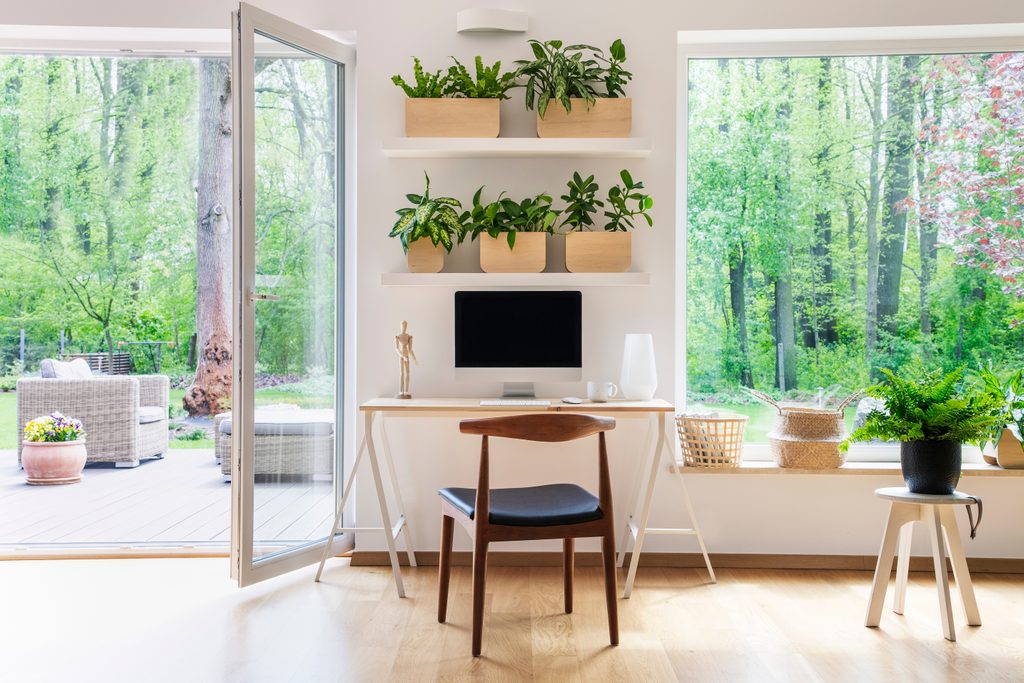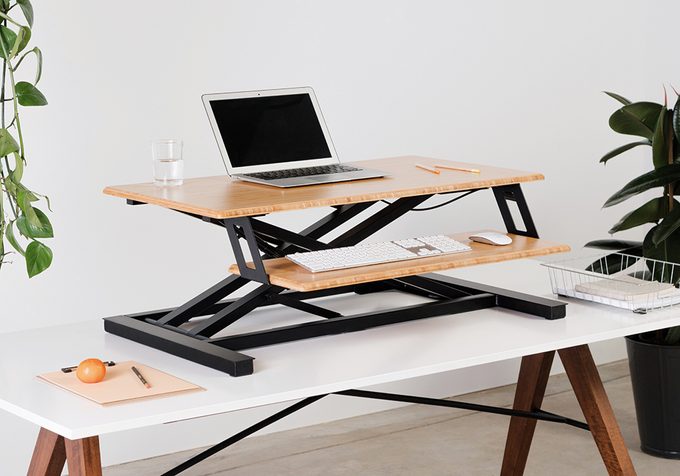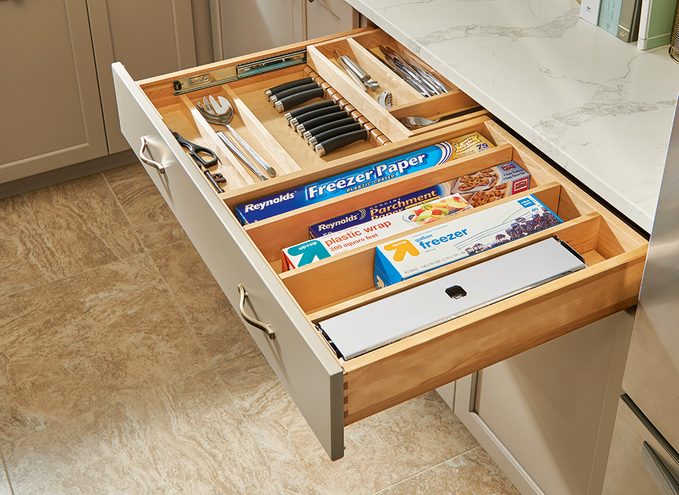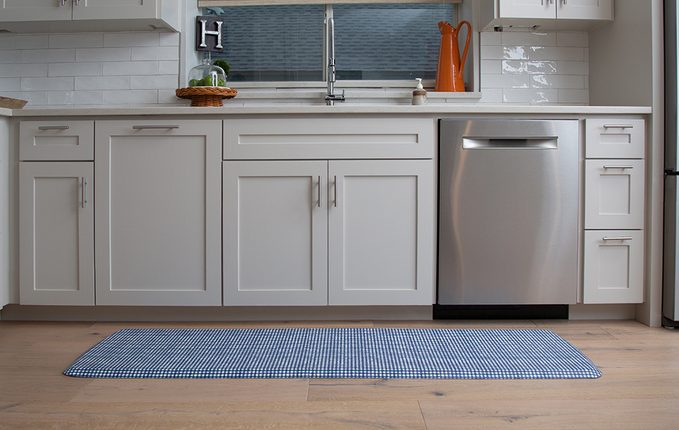10 Changes You Can Make For a Healthier Home

Expert Jamie Gold shares the small changes you can make to your home optimize your physical and mental well-being.
It’s hard to find a trendier word these days than “wellness.” The pursuit of optimal mind and body amazingness is baked into everything from the turmeric lattes we’re supposed to be drinking to the forest bathing we forgot to do because we were too busy counting our steps and wondering if showering counts as self-care.
That fact that it’s become so pervasive, though, says something about our collective psyche, and its constant desire to be soothed. No surprise then that wellness has also become a popular facet of home design—especially in the luxury custom-build market—with applications that stretch from building materials to floorplans to furnishings that encourage movement and exercise.
While most people can’t afford to install a customized spa shower or create a suped-up home gym, Jamie Gold, certified wellness coach and author of a new book, Wellness by Design, says everyone can benefit from employing some basic principles. “It shouldn’t just be for the well-to-do,” she says. “There are always going to be features that are out of your control, but there are lots of things you can still do to enhance daily life in your home.”
Now that many of us are housebound it’s worth optimizing our space for better physical and mental well-being. Here are Gold’s room-by-room tips for a healthier home.
(Related: 6 At-Home Massage Tools Physiotherapists Swear By)
Work space
1. Beware the laptop
If you’re one of the many people who are now working at home hunched over a laptop, Gold says the easiest thing you can do to avoid repetitive strain injuries is use a separate keyboard, mouse and monitor. “Laptops simply aren’t designed for ergonomic use,” she says.

2. Invest in a desk riser or standing desk
We’ve all heard the phrase “sitting is the new smoking;” evidence is mounting that regular, prolonged periods of sitting elevates your chances of getting heart disease, diabetes and even some cancers (not to mention it’s murder on your back). If you have the space, a desk that can be used for standing or sitting can help offset the effects of being on your tuchus all day.
3. Move your butt
The best thing you can do is move—every day—and Gold’s not even talking about capital-E exercise (though you should do that, too!). This is another mark against working from home; losing just the daily steps you’d get from an average commute and walking around a workplace is detrimental to your health. “Moving is better than standing and standing is better than sitting,” she says. “Even if you exercise for an hour a day it’s not enough to counterbalance the negative effects of sitting for eight hours.” So get some wireless ear buds and take those conference calls on a march around the house, do laps around your kitchen island or go up and down the stairs.
(Related: What Working from Home Does to Your Body)
Kitchen
4. Create zones
“You want to make cooking healthy meals appealing,” says Gold. “That’s hard to do if you find your kitchen a frustrating place.” The first step to making you kitchen a zen garden in your mind, she says, is to organize it into dedicated zones for cleaning, cooking and storage.

5. Organize your storage
As anyone who’s ever slammed an overflowing Tupperware drawer in a blind rage after you couldn’t find any damn lids that fit any of your damn containers knows, organizing your kitchen cabinets can completely change the associations you have with a room you enter up to three times—or six, who’s counting?—every day. Gold suggests getting rid of (or at least relocating) rarely used items, and investing in drawer organizers.
6. Get a multicooker
Home cooking is always healthier than delivery, and Gold is a fan of countertop appliances like the Instant Pot or a slow cooker that encourage a lifestyle focused on using fresh, whole foods. If you have the space, she says ideally one of these should live on your counter for easy access.

7. Try an anti-fatigue mat
Another must-have is a cushy anti-fatigue floor mat to put where you stand when prepping meals. “It takes a lot of pressure off your joints and it’s so affordable.” Gold also suggests putting one of these wherever you spend a lot of time on your feet.
(Related: 10 Easy Hacks to Speed Up Kitchen Prep)
Bedroom and living room
8. Choose the right lighting
Blue light from electronic devices can mess with your melatonin levels and screw up your sleep, but the general lighting in your home can also affect your mood and circadian rhythms. “Lean towards warmer bulbs in zones where you want to relax,” says Gold. Warmer LED bulbs—as opposed to the less-popular and not nearly-as-energy-efficient incandescent or fluorescents—will often be labelled as “warm” white or “soft” white and will be under 3,500 Kelvins. (Kelvins measures the hue of the bulb, lumens is how bright it is and watts are a measure of its power consumption. Yes, you do need a science degree to replace a lightbulb!) Bulbs that will make you more alert will often be marketed as cool or bright white or as “daylight” bulbs.
9. Optimize your air
People who suffer from allergies or environmental sensitivities know about the game-changing potential of an indoor air purifier, and now that we’re all on high alert for germs, investing in one with a high-quality HEPA filter seems like a smart move. Gold says if you don’t have room for a separate purifier at least ensure you have the highest possible filter on your HVAC system and make sure you change it regularly—the general rule of thumb is at least once every three months.
(Related: How to Create a Work-Life Balance When You’re Working From Home)
Bathroom
10. Get a detachable handheld massaging showerhead
Last, but as your strained neck/shoulders/back will tell you, certainly not least, Gold says pointing one of these babies at areas where you have pain can be a cheap and cheerful substitute for the in-person massages that are fewer and far between these days.
Next: 11 Products That’ll Help You Be More Productive When Working From Home




